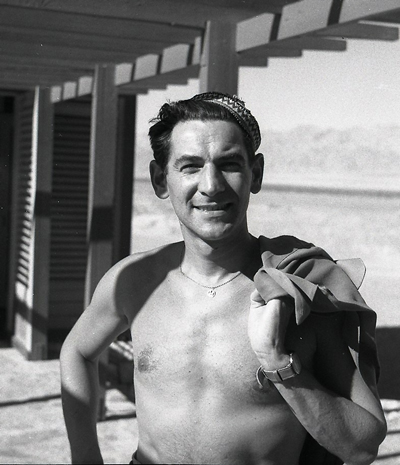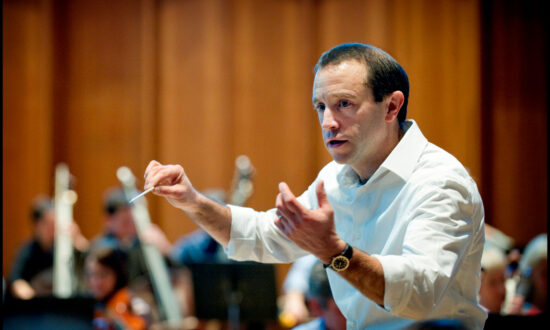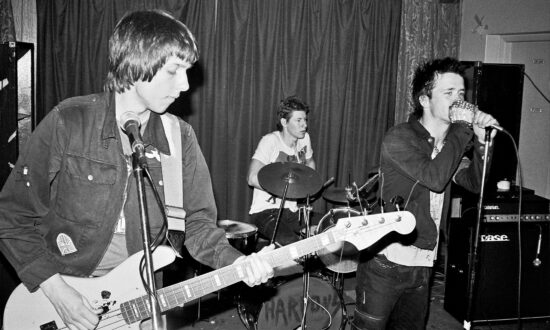Leonard Bernstein was called on to conduct the New York Philharmonic at short notice and without rehearsal.
True: Although Bernstein (played by Bradley Cooper in Maestro) did not go on stage quite as unprepared as the film suggests. As an assistant conductor, he was required to be familiar with the current season’s scores in case he was called upon unexpectedly. Even though the orchestra wasn’t available for a rehearsal, Bernstein had time that day to visit the principal conductor, a flu-stricken Bruno Walter, for coaching before he was due on stage. The film opens with Bernstein’s auspicious phone call, the concert being a success and the launch of his career and infamy.
Bernstein and Felicia Montealegre’s affair was a whirlwind romance.
False: Felicia (portrayed in the film by Carey Mulligan) married Bernstein on the rebound. The couple did meet in 1947 and became engaged a few months later but broke it off. Felicia became romantically involved with actor Richard Hart (who in Maestro pays a visit to a smitten Felicia’s dressing room when she is appearing on Broadway). Hart died at the beginning of 1951, and Felicia gave Bernstein another chance. The couple announced their second engagement in August 1951 and married a month later.
Felicia was initially oblivious to Bernstein’s sexuality.
False: Bernstein had affairs with men and women throughout his marriage, and he and Felicia had a mutual understanding of his sexuality as long as he respected Felicia’s wishes and was discreet in his conduct. However, as his affairs became more public and more obvious, Felicia and Bernstein came to loggerheads, which ultimately led to their separation. This is played out in a powerful scene in the film where an intense argument between two people falling out of love is set against the backdrop of a giant Snoopy gliding past a window during a Thanksgiving parade.
Felicia asked Bernstein to lie to his daughter about his sexuality.
Unknown: Actress Maya Hawke plays Jamie Bernstein opposite Cooper in a touching scene in the film where they discuss his sexuality. The real Jamie wrote in her memoir about hearing stories of her father’s “wild youth”, including affairs with men. Jamie wrote to her mother mentioning the stories which were evidently shared with her father as he took her aside one evening to tell her the rumours weren’t true. Years later, as Jamie worked with Cooper on the film, it occurred to her that her mother may well have put her father up to denying the rumours. Cooper took that piece of speculation and wove it into his narrative in a painfully plausible way.

Leonard Bernstein. Photo: Benno Rothenberg / Meitar Collection / National Library of Israel / The Pritzker Family National Photography Collection / CC BY 4.0
Felicia contributed to writing Candide.
True: She co-wrote “I am easily assimilated”, which is sung by The Old Lady (played by Caroline O’Connor in State Opera’s production). Though Lillian Hellman wrote the original 1956 book, many other lyricists contributed to the ever-evolving lyrics, including John La Touche, Richard Wilbur, Dorothy Parker and Stephen Sondheim. In the film, we see a snippet of Felicia’s contribution to Candide where Bernstein is rehearsing a choral performance of “Make our Garden Grow”, a song about finding happiness in a world full of misery and disaster and making the best of what you’ve got. An apt choice for Felicia and Bernstein, who grow and cultivate their life together.
Bernstein was the life of the party.
True: Several scenes in the film show Bernstein attending parties and soirees, even one where he snorts cocaine among friends and lovers. Bernstein was a true hedonist; his heavy smoking and promiscuity are not shied away from in the film, and he drank and took drugs liberally. Bernstein loved people and sought company frequently. He even celebrated a birthday at Seppeltsfield Wines after a performance at the Festival Theatre in Adelaide in 1974!
Perhaps his wild ways were born from something else. Bernstein was diagnosed with emphysema at a young age and was told by doctors that he would die by the time he was 35. Perhaps not taking this destiny lightly, he led a life full of drama, controversy and indulgence, burning the candle at both ends until his death in 1990. He was 72.
Bernstein was with Felicia when she passed away.
True: Felicia died of cancer aged 56 at the family home in Long Island in June 1978. Though Bernstein and Felicia had separated, upon her diagnosis and declining health he moved back to the family home and cared for her until she passed. Even though their marriage had deteriorated, the film heartbreakingly shows that the love Bernstein and Felicia had for each other endured to the end.
Bernstein conducted at Ely Cathedral.
True: Bernstein didn’t just stick to music halls or theatres, his love for music extended from Broadway to classical (and even pop and jazz). The scene set in Ely Cathedral about two-thirds of the way through the film is a true depiction of Bernstein conducting Mahler’s 2nd Symphony with the London Symphony Orchestra in 1973.

Get InReview in your inbox – free each Saturday. Local arts and culture – covered.
Thanks for signing up to the InReview newsletter.
Cooper trained for six years to learn not only how to conduct the current LSO but also how to copy Bernstein’s unique style, and he manages to physically depict the exuberant energy and passion for music Bernstein became so well known for. Cooper and the Maestro crew went to painstaking levels of detail to re-create the performance, from the exact positioning of orchestra members to reproducing programs for the event which didn’t even appear on screen. Many of the LSO musicians were asked to grow beards or not cut their hair to resemble their counterparts for maximum authenticity.
This article was originally published on the State Opera South Australia website and is shared here with permission. State Opera and State Theatre Company of SA will present Candide at Her Majesty’s Theatre from May 23-25.
Read InReview’s review of Maestro here.
Support local arts journalism
Your support will help us continue the important work of InReview in publishing free professional journalism that celebrates, interrogates and amplifies arts and culture in South Australia.
Donate Here




